The Diocese of Venice continues its recovery from Hurricane Ian which devastated the region on Sept. 28, 2022, with winds up to 155 mph and storm surge and flooding rains.
The recovery has been aided thanks to the kindness of many who saw the plight of the Parishes in the Diocese of Venice and contributed to the United States Conference of Catholic Bishops (USCCB) 2022 Special Collection for the Bishops’ Emergency Disaster Fund. The Diocese of Venice has been awarded $1.383 million from the USCCB collection.
![]()
Since the time of the founding of the Diocese in 1984, the faithful have generously responded to help others through special collections, and now this generosity is coming back to our own Diocese, as it did following Hurricane Charley in 2004 and Hurricane Irma in 2017.
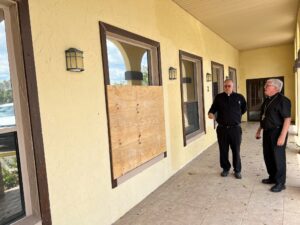
Bishop Frank J. Dewane said he was personally grateful, on behalf of the faithful of the Diocese of Venice, “to all of the people who contributed to the Bishops’ Emergency Disaster Fund Special Collection in the wake of Hurricane Ian. The devastation to communities in the area, and even to the infrastructure of the Diocese, was catastrophic. Even today, as families continue the process of rebuilding, so do our Diocesan Parishes. I also wish to thank my fellow Bishops who saw the need in the Diocese of Venice and were generous to those Parishes who were most burdened financially when disaster struck.”
Ian took a heavy toll on the Diocese of Venice, with more than 685 reports of damage to various structures. Significant damage was found in more than 400 structures, including at 30 Parishes and 10 Catholic schools, as well as at many other Diocesan entities. The resulting cost to rebuild exceeded what many Parishes could begin to manage.
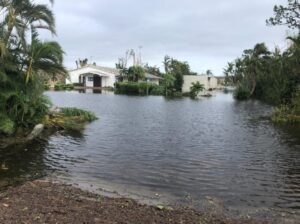
Bishop Dewane, on behalf of the Diocese of Venice, made a formal request for grant money raised through the Bishops’ Emergency Disaster Fund. This application included a complete description of damages, with accompanying photos, as well as the entities financial situations.
At a USCCB meeting, the Subcommittee on Catholic Home Missions awarded a $1.383 million grant from the Bishops’ Emergency Disaster Fund to the Diocese of Venice. This grant money was designated to assist 13 Parishes in the Diocese that serve impoverished communities and had sustained severe damage from Hurricane Ian. The funds received covered a significant portion of the insurance deductibles – in some cases hundreds of thousands of dollars – and costs that Parishes owed for new roofs, mold mitigation, and other repairs that otherwise didn’t have resources.
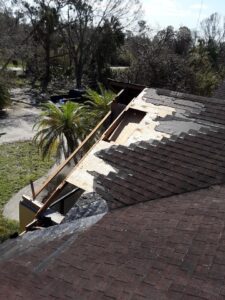
Parishes receiving a portion of the grant monies included Jesus the Worker (San Jose Mission), Fort Myers; Our Lady Queen of Martyrs, Sarasota; San Antonio, Port Charlotte; St. Andrew, Cape Coral; St. Catherine, Sebring; St. Charles Borromeo, Port Charlotte; St. James, Lake Placid; St. Joseph the Worker, Moore Haven; St. Katharine Drexel, Cape Coral; St. Maximilian Kolbe, Port Charlotte; St. Michael, Wauchula; St. Paul, Arcadia; and St. Francis Xavier, Fort Myers.
The Bishops’ Emergency Disaster fund was established as a way for Dioceses to take up special collections in response to disasters and humanitarian crises. The fund supports USCCB efforts for pastoral and reconstruction efforts.
“St. Paul wrote that when one Christian suffers, all Christians suffer – because we are all part of one Body of Christ,” said Bishop James S. Wall of Gallup, Chairman of the USCCB Committee on National Collections. “That unity is the heart of (special) collections. They bring faith, hope, and love to people in despair… and to disaster victims in our own nation.”
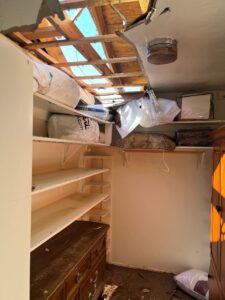
Bishop Dewane and Diocese of Venice Chancellor Dr. Volodymyr Smeryk visited impacted Parishes to see firsthand the extent of the damages and to learn of specific financial hardship. Parishes reported severe damage to churches, rectories and other Parish facilities.
Grant awards were announced in July, with the Diocese of Venice awarded $1.383 million. Smeryk said the grants assisted substantially in helping the most impoverished Parishes to recover from Ian faster than would otherwise have been possible.
In addition to the Bishops’ Emergency Disaster Fund grants, the Diocese was also the beneficiary of emergency grants from Catholic Charities USA in the weeks following the storm, support which continues to this day. This support went to the immediate disaster response, helping people with emergency supplies such as food and water. Catholic Charities USA’s generous contribution continues to help even today, now providing long-term disaster recovery and financial assistance for families who continue to rebuild from Hurricane Ian more than one year later.






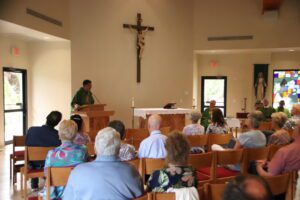
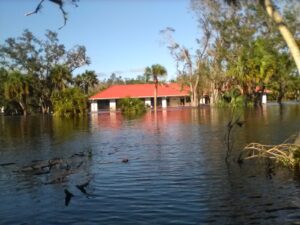

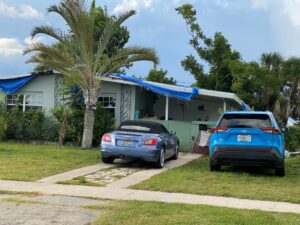

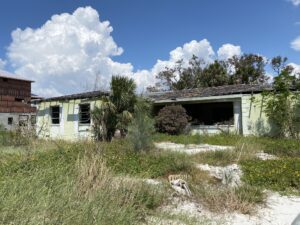


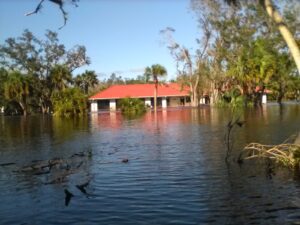
 An appeal for volunteers with strong backs was posted to social media on June 13, 2023, to the members of the various Hispanic movements to help plant flowers and bushes while others assembled furniture.
An appeal for volunteers with strong backs was posted to social media on June 13, 2023, to the members of the various Hispanic movements to help plant flowers and bushes while others assembled furniture.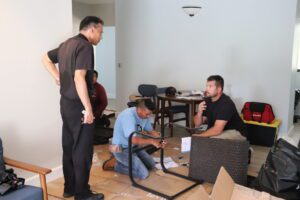
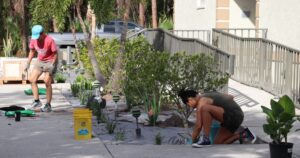

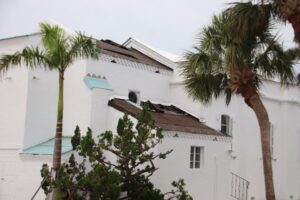


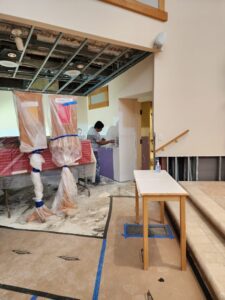
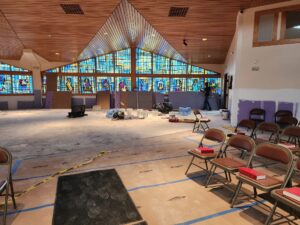
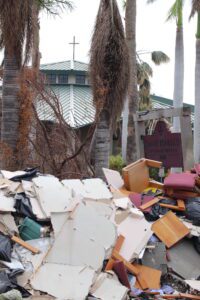
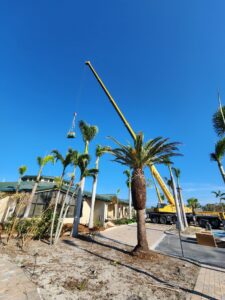
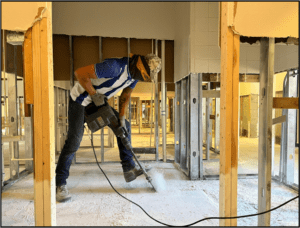 OLPH Director, Father Mark Yavarone, Oblate of the Virgin Mary, first inspected the property by kayak on Sept. 29, 2022, the day after the hurricane. At that time, the Myakka River waters had risen to cover the entire property and were as high as they had ever been since OLPH was founded in 1988. Father noted at the time he was shocked to see the water so high, unaware that the menacing river was not done rising.
OLPH Director, Father Mark Yavarone, Oblate of the Virgin Mary, first inspected the property by kayak on Sept. 29, 2022, the day after the hurricane. At that time, the Myakka River waters had risen to cover the entire property and were as high as they had ever been since OLPH was founded in 1988. Father noted at the time he was shocked to see the water so high, unaware that the menacing river was not done rising.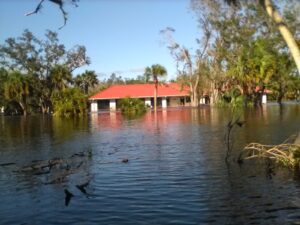

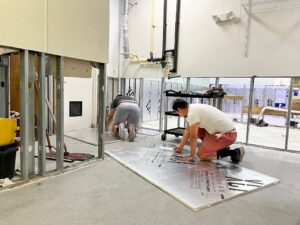
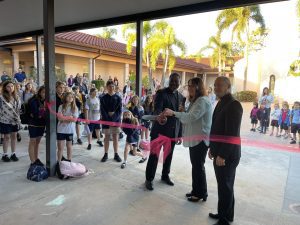
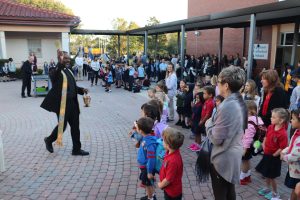 “What a wonderful day,” Principal Nicole Loseto proclaimed. “When the hurricane struck everyone rallied together to salvage what we could to relocate classrooms all over the campus in just two days. It was a challenge to move everyone to a new location and it was seamless and beautiful… Now everyone came together to get us back into our main building. Thank you, everyone!”
“What a wonderful day,” Principal Nicole Loseto proclaimed. “When the hurricane struck everyone rallied together to salvage what we could to relocate classrooms all over the campus in just two days. It was a challenge to move everyone to a new location and it was seamless and beautiful… Now everyone came together to get us back into our main building. Thank you, everyone!”
 Only the pre-kindergarten students were not displaced by Hurricane Ian. The disruptions were extreme as kindergartners were housed in the library; first and second grades were placed in the cafeteria with a divider; fourth and fifth graders were in the Parish Hall; and middle schoolers were split between the Soy Hall and two gymnasium locker rooms.
Only the pre-kindergarten students were not displaced by Hurricane Ian. The disruptions were extreme as kindergartners were housed in the library; first and second grades were placed in the cafeteria with a divider; fourth and fifth graders were in the Parish Hall; and middle schoolers were split between the Soy Hall and two gymnasium locker rooms.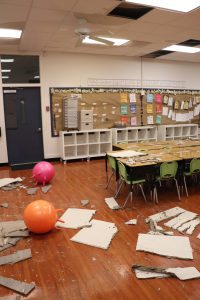 She also gave a shout out to the many people who helped support the recovery effort through financial support which helped ease the burden on the school.
She also gave a shout out to the many people who helped support the recovery effort through financial support which helped ease the burden on the school.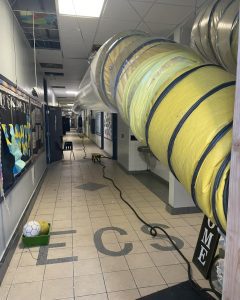
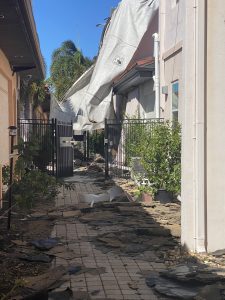 Ahead of the reopening, a team of faculty staff and parents moved all of the desks and other educational items from their temporary rooms to the main building. The upper grades were allowed in the building on Jan. 6, the 100th day since Hurricane Ian struck Venice.
Ahead of the reopening, a team of faculty staff and parents moved all of the desks and other educational items from their temporary rooms to the main building. The upper grades were allowed in the building on Jan. 6, the 100th day since Hurricane Ian struck Venice.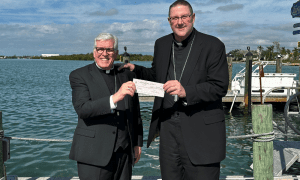 Bishop Parkes met with Bishop Frank J. Dewane on Dec. 21, 2022, in Venice to personally present the check for $250,000. These funds were the result of a special collection following the hurricane.
Bishop Parkes met with Bishop Frank J. Dewane on Dec. 21, 2022, in Venice to personally present the check for $250,000. These funds were the result of a special collection following the hurricane.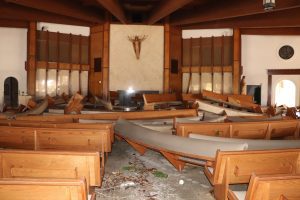 In a Sept. 30 letter to all Parishes in the Diocese of St. Petersburg, Bishop Parkes wrote: “Our hearts are moved with compassion for all those who have suffered damage and destruction due to Hurricane Ian, especially our brothers and sisters in the Diocese of Venice.”
In a Sept. 30 letter to all Parishes in the Diocese of St. Petersburg, Bishop Parkes wrote: “Our hearts are moved with compassion for all those who have suffered damage and destruction due to Hurricane Ian, especially our brothers and sisters in the Diocese of Venice.”